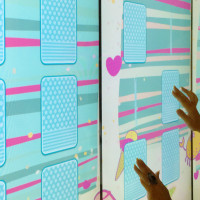
RETAIL
Choose the evolution in retail
Find out how we can help you create new in-store experiences that win over consumers and add value to your brand.
Despite repeated alarm signals about an irreversible crisis in traditional shops, which are to be decimated by competition from large online players, data and market research tell us a bit of a different story. To date, the majority of purchases are still made in brick and mortar stores; online transactions are at 20%. This is true, quite surprisingly, also for generations born after 2000: in order to be fully satisfying, a shopping experience still needs to be in a physical space.
So shops that are tending to close their doors have more complex reasons than just competition of online shopping. To understand the causes and to put effective strategies in place, we need to consider the radical change in the habits and preferences of those who are purchasing: consumers.
We only need to look around us to see how the spread of smartphones has changed behaviors, habits, and people's preferences. The buying process is no exception: it often begins in the digital space, comparing models, prices, and characteristics, and then it ends within a physical point of sale. Or, conversely, the user experience in a physical store ends in the digital shop. In any case, it is clear that the integration between the two worlds, both physical and digital, is the key to intercepting new consumers. The only way to accomplish this integration is through technology.
Simply implementing new technologies does not magically solve all of the critical issues. You need a strategic plan, objectives and measurable results that support the technological innovation and make it really effective.
It must be clear that the experience offered inside the store is part of a marketing project that integrates the online world, such as a website, virtual showroom, configurator, and documentation, with the offline world, for example a digital signage system, multimedia totems, free Wi-Fi and so on. Both worlds must focus on the consumer's user experience.
The choice of the interactive technology that will be integrated in the point of sale must be made within a customized strategic plan, which supports and strengthens the brand on all channels.
By adopting this type of technological innovation, which is in step with new consumer experiences and needs and which offers a tangible advantage to your customers, you are taking the first step towards a store with a secure future.
The buying process does not begin when the consumer crosses the threshold of the store; rather it is much earlier. Browsing through the windows, real and virtual, means coming into contact with products that we did not yet know we wanted.
In the online world, it is possible to provide suggestions to consumers based on their preferences, offering a personalized browsing experience. The effort is to extend that into the physical store, and creating a conversation with the consumer in order to understand how to improve the shopping experience by measuring, for example, the consumer’s appreciation of the merchandise, assortment, furnishings, and so on.
You can integrate technological systems for measuring flow within the point of sale; you can also create customer surveys and offer a free Wi-Fi connection to interact with them. Getting to know your visitors, creating an exchange with them and, finally, measuring the results, all generate key indicators to bring the store closer to new consumer needs
The greatest limitation of digital interaction is the fact that it is a solitary experience at the end of the day. Market research has shown that today users like to overcome this limit and experience digital and social experiences at the same time. In this sense, a brick and mortar store can become a place where buying is only part of a new way of being together, where technological innovation makes it possible to live memorable experiences.
For example, think of the possibility of browsing on social media in the store and posting content that will be visible on the large screens instore. Or a digital signage system that truly interacts with visitors, offering flash real-time promotions. Or waiting areas equipped with digital gaming systems that let visitors compete with friends.
Making the shopping experience an opportunity for collective digital engagement is certainly a key to making the store a memorable space.
Ultimately, it is clear that it is not so much the competition from those large online retailers that puts the survival of traditional retail at risk; rather it’s the lack of effective strategies to keep up with radical changes in consumer experiences.
Adopting and integrating innovative technological systems can be essential not to increase the store’s success, but for its own survival.

Find out how we can help you create new in-store experiences that win over consumers and add value to your brand.

At Kiddy Zone you'll find all the toys you need, especially interactive ones!

Recreation areas for children, playgrounds where young guests can play and compete with one another.

Creating a digital entertainment area for children, where they can tackle new challenges and socialize.